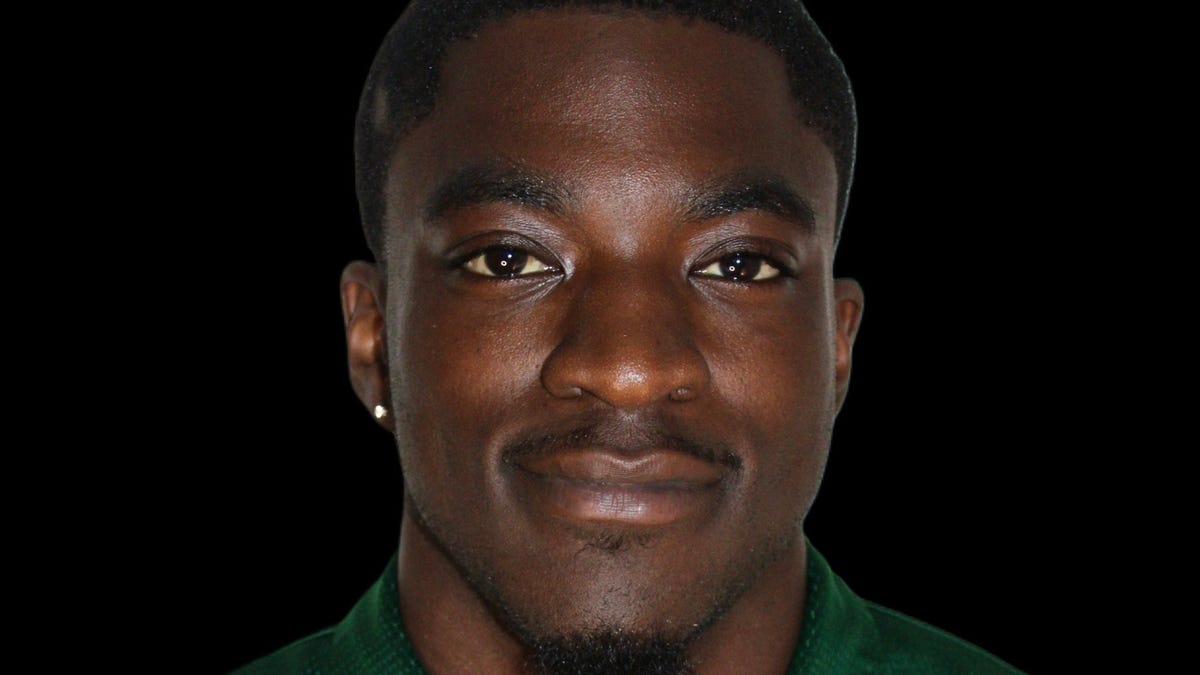Science
About how many detectable earthquakes shake the Earth each year?


Science
Trump administration sues California over cage-free egg and animal welfare law

The Trump administration has sued California over the state’s voter-approved animal welfare law, which protects hens, pigs and calves from being kept in small cages, claiming the law has driven up egg prices and violates federal farming laws and regulations.
“California has contributed to the historic rise in egg prices by imposing unnecessary red tape on the production of eggs,” wrote lawyers in the lawsuit, which was filed in U.S. District Court in Los Angeles on Wednesday.
California Gov. Gavin Newsom and Atty. Gen. Rob Bonta vowed to defend the state law.
“Pointing fingers won’t change the fact that it is the President’s economic policies that have been destructive. We’ll see him in court,” Bonta said in a statement.
California’s animal-welfare law was approved by voters as Proposition 12 in 2018. The law was upheld by the U.S. Supreme Court in 2023.
“In a functioning democracy, policy choices like these usually belong to the people and their elected representatives,” wrote Justice Neil M. Gorsuch, a Trump appointee, in the lead opinion. He said that while many state laws may have economic effects in other states, they are only in violation of the Constitution if they were written with the intent to interfere with interstate commerce.
The Department of Justice contends the California law preempts federal laws, including the Egg Products Inspection Act, and that no state has the right to institute its own standards on the production or “quality, condition, weight, quantity or grade” of eggs that differs from those set by the federal government.
The law has been repeatedly challenged by the National Pork Producers Council and others. Just last month, the Supreme Court declined to accept a petition for certiorari from the Iowa Pork Producers Council.
In the suit filed Wednesday, the Justice Department contends that California’s egg standards “do not advance consumer welfare” and are “not based in specific peer-reviewed published scientific literature or accepted as standards within the scientific community to reduce human food-borne illness … or other human or safety concerns.”
Egg prices soared earlier this year, soon after Trump took office. Most experts pointed to the H5N1 bird flu epidemic as the cause of the spike, as millions of egg-laying chickens across the nation were euthanized to prevent the spread.
Prices have since moderated as the outbreak has diminished. In the last 30 days, there has been only one reported commercial flock infection in Pennsylvania. The birds were not egg layers.
In February, the U.S. Department of Agriculture’s Secretary Brooke Rollins, penned an op-ed in the Wall Street Journal suggesting the Trump administration would target the law.
California egg producers have in the past opposed changing the law.
Bill Mattos, president of the California Poultry Federation, said in an interview in February that California egg farmers had spent millions of dollars to upgrade and adapt their farms. Reversing the law would put California poultry farmers — and all the other egg producers that sell to California — at a huge economic disadvantage by requiring them to invest millions more dollars to buy cages and re-adapt their facilities for such operations.
Animal welfare advocates say the lawsuit is short-sighted and has the potential to hurt California’s egg-laying industry.
“With this ill-considered legal action, the Administration is dropping a set of stink bombs into the bosom of the egg industry,” said Wayne Pacelle, president of Animal Wellness Action and the Center for a Humane Economy.
He said California egg farmers are still recovering from the bird flu outbreak, and this suit, if successful, would disrupt the still fragile supply chain “and provide an opening for egg farmers from Mexico — which have no animal welfare standards at all — to access the California market.”
Science
Amid state inaction, California chef sues to block sales of foam food containers

Redwood City — Fed up with the state’s refusal to enforce a law banning the sale of polystyrene foam cups, plates and bowls, a San Diego County resident has taken matters into his own hands.
Jeffrey Heavey, a chef and owner of Convivial Catering, a San Diego-area catering service, is suing WinCup, an Atlanta-based foam foodware product manufacturing company, claiming that it continues to sell, distribute and market foam products in California despite a state law that was supposed to ban such sales starting Jan. 1. He is suing on behalf of himself, not his business.
The suit, filed in the San Diego County Superior Court in March, seeks class action status on behalf of all Californians.
Heavey’s attorney, William Sullivan of the Sullivan & Yaeckel Law Group, said his client is seeking an injunction to stop WinCup from selling these banned products in California and to remove the products’ “chasing arrows” recycling label, which Heavey and his attorney describe as false and deceptive advertising.
They are also seeking damages for every California-based customer who paid the company for these products in the last three years, and $5,000 to every senior citizen or “disabled” person who may have purchased the products during this time period.
WinCup didn’t respond to requests for comments, but in a court filing described the allegations as vague, unspecific and without merit, according to the company’s attorney, Nathan Dooley.
Jeffrey Heavey is suing foodware maker WinCup, claiming that it continues to sell, distribute and market foam products in California despite a state law that was supposed to ban such sales starting Jan. 1.
(Luke Johnson / Los Angeles Times)
At issue is a California ban on the environmentally destructive plastic material, which went into effect on Jan. 1, as well as the definition of “recyclable” and the use of such a label on products sold in the state.
Senate Bill 54, signed into law by Gov. Gavin Newsom in 2021, targeted single-use plastic in the state’s waste stream.
The law included a provision that banned the sale and distribution of expanded polystyrene food service ware — such as foam cups, plates and takeout containers — on Jan. 1, unless producers could show they had achieved a 25% recycling rate.
“I’m glad a person in my district has taken this up and is holding these companies accountable,” said Catherine Blakespear (D-Encinitas). “But CalRecycle is the enforcement authority for this legislation, and they should be the ones doing this.”
The intent of the law was to put the financial onus of responsible waste management onto the producers of these products, and away from California’s taxpayers and cities that would otherwise have to dispose of these products or deal with their waste on beaches, in rivers and on roadways.
Expanded polystyrene is a particularly pernicious form of plastic pollution that does not biodegrade, has a tendency to break down into microplastics, leaches toxic chemicals and persists in the environment.
There are no expanded polystyrene recycling plants in California, and recycling rates nationally for the material hover around 1%.

A Mallard duck swims in water with Styrofoam polluting the beach on Lake Washington, Kirkland, Wash.
(Wolfgang Kaehler / LightRocket via Getty Images)
However, despite CalRecycle’s delayed announcement of the ban, companies such as WinCup not only continue to sell these banned products in California, but Heavey and his lawyers allege the products are deceptively labeled as “recyclable.”
In his suit, Heavey includes a March 15 receipt from a Smart & Final store in the San Diego County town of National City, indicating a purchase of “WinCup 16 oz. Foam” cups.
Similar polystyrene foam products could be seen on the shelves this week at a Redwood City Smart & Final, including a 1,000-count box of 12-ounce WinCup foam cups selling for $36.99. Across the aisle, the shelves were packed with bags of Simply Value and First Street (both Smart & Final brands) foam plates and bowls.
There were “chasing arrow” recycling labels on the boxes containing cup lids. The symbol included a No. 6 in the center, indicating the material is polystyrene. There were none on the cardboard boxes containing cups, and it couldn’t be determined if the individual foam products were tagged with recycling labels. They were either obstructed from view inside cardboard boxes or stacked in bags which obscured observation.
Smart & Final, which is owned by Chedraui USA, a subsidiary of Mexico City-based Grupo Comercial Chedraui, didn’t respond to requests for comment.
Heavey’s suit alleges the plastic product manufacturer is “greenwashing” its products by labeling them as recyclable and in so doing, trying to skirt the law.
According to the suit, recycling claims are widely disseminated on products and via other written publications.
The company’s website includes an “Environmental” tab, which includes a page entitled: “Foam versus Paper Disposable Cups: A closer look.”
The page includes a one-sentence argument highlighting the environmental superiority of foam over paper, noting that “foam products have a reputation for environmental harm, but if we examine the scientific research, in many ways Expanded Polystyrene (EPS) foam is greener than paper.”
Heavey’s suit claims that he believed he was purchasing recyclable materials based on the products’ labeling, and he would not have bought the items had they not been advertised as such.
WinCup, which is owned by Atar Capital, a Los Angeles-based global private investment firm sought to have the case moved to the U.S. District Court in San Diego, but a judge there remanded the case back to the San Diego Superior Court or jurisdiction grounds.
Susan Keefe, the Southern California Director of Beyond Plastics, an anti-plastic environmental group based in Bennington, Vt., said that as of June, the agency had not yet enforced the ban, despite news stories and evidence that the product was still being sold in the state.
“It’s really frustrating. CalRecycle’s disregard for enforcement just permits a lack of respect for our laws. It results in these violators who think they can freely pollute in our state with no trepidation that California will exercise its right to penalize them,” she said.
Melanie Turner, a spokesoman for CalRecycle, said in a statement that expanded polystyrene producers “should no longer be selling or distributing expanded polystyrene food service ware to California businesses.”
“CalRecycle has been identifying and notifying businesses that may be impacted by SB 54, including expanded polystyrene requirements, and communicating their responsibilities with mailed notices, emailed announcements, public meetings, and workshops,” she said.
The waste agency “is prioritizing compliance assistance for producers regulated by this law, prior to potential enforcement action,” she said.
Keefe filed a public records request with the agency regarding communications with companies selling the banned material and said she found the agency had not made any attempts to warn or stop the violators from selling banned products.
Blakespear said it’s concerning the law has been in effect for more than six months and CalRecycle has yet to clamp down on violators. Enforcement is critical, she said, for setting the tone as SB 54 is implemented.
According to Senate Bill 54, companies that produce banned products that are then sold in California can be fined up to $50,000 per day, per violation.
According to a report issued by the waste agency last week, approximately 47,000 tons of expanded polystyrene foam was disposed in California landfills last year.
Science
How a Supreme Court win for public health bolstered RFK Jr. and threatens no-cost vaccines

WASHINGTON — Public health advocates won a big case in the Supreme Court on the last day of this year’s term, but the victory came with an asterisk.
The decision ended one threat to the no-cost preventive services — from cancer and diabetes screenings to statin drugs and vaccines — used by more than 150 million Americans who have health insurance.
But it did so by empowering the nation’s foremost vaccine skeptic: Health and Human Services Secretary Robert F. Kennedy Jr.
Losing would have been “a terrible result,” said Washington attorney Andrew Pincus. Insurers would have been free to quit paying for the drugs, screenings and other services that were proven effective in saving lives and money.
But winning means that “the secretary has the power to set aside” the recommendations of medical experts and remove approved drugs, he said. “His actions will be subject to review in court,” he added.
The new legal fight has already begun.
Last month, Kennedy cited a “crisis of public trust” when he removed all 17 members of a separate vaccine advisory committee. His replacements included some vaccine skeptics.
The vaccines that are recommended by this committee are included as preventive services that insurers must provide.
On Monday, the American Academy of Pediatrics and other medical groups sued Kennedy for having removed the COVID-19 vaccine as a recommended immunization for pregnant women and healthy children. The suit called this an “arbitrary” and “baseless” decision that violates the Administrative Procedure Act.
“We’re taking legal action because we believe children deserve better,” said Dr. Susan J. Kressly, the academy’s president. “This wasn’t just sidelining science. It’s an attack on the very foundation of how we protect families and children’s health.”
On Wednesday, Kennedy postponed a scheduled meeting of the U.S. Preventive Services Task Force that was at the center of the court case.
“Obviously, many screenings that relate to chronic diseases could face changes,” said Richard Hughes IV, a Washington lawyer and law professor. “A major area of concern is coverage of PrEP for HIV,” a preventive drug that was challenged in the Texas lawsuit that came to the Supreme Court.
By one measure, the Supreme Court’s 6-3 decision was a rare win for liberals. The justices overturned a ruling by Texas judges that would have struck down the popular benefit that came with Obamacare. The 2012 law required insurers to provide at no cost the preventive services that were approved as highly effective.
But conservative critics had spotted what they saw was a flaw in the Affordable Care Act. They noted the task force of unpaid medical experts who recommend the best and most cost-effective preventive care was described in the law as “independent.”
That word was enough to drive the five-year legal battle.
Steven Hotze, a Texas employer, had sued in 2020 and said he objected on religious grounds to providing HIV prevention drugs, even if none of his employees were using those drugs.
The suit went before U.S. District Judge Reed O’Connor in Fort Worth, who in 2018 had struck down Obamacare as unconstitutional. In 2022, he ruled for the Texas employer and struck down the required preventive services on the grounds that members of the U.S. Preventive Services Task Force made legally binding decisions even though they had not been appointed by the president and confirmed by the Senate.
The 5th Circuit Court put his decision on hold but upheld his ruling that the work of the preventive services task force was unconstitutional because its members were “free from any supervision” by the president.
Last year, the Biden administration asked the Supreme Court to hear the case of Xavier Becerra vs. Braidwood Management. The appeal said the Texas ruling “jeopardizes health protections that have been in place for 14 years and millions of Americans currently enjoy.”
The court agreed to hear the case, and by the time of the oral argument in April, the Trump administration had a new secretary of HHS. The case was now Robert F. Kennedy Jr. vs. Braidwood Management.
The court’s six conservatives believe the Constitution gives the president full executive power to control the government and to put his officials in charge. But they split on what that meant in this case.
The Constitution says the president can appoint ambassadors, judges and “all other Officers of the United States” with Senate approval. In addition, “Congress may by law vest the appointment of such inferior officers” in the hands of the president or “the heads of departments.”
Option two made more sense, said Justice Brett M. Kavanaugh. He spoke for the court, including Chief Justice John G. Roberts and Justice Amy Coney Barrett, and the court’s three liberal justices.
“The Executive Branch under both President Trump and President Biden has argued that the Preventive Services Task Force members are inferior officers and therefore may be appointed by the Secretary of HHS. We agree,” he wrote.
This “preserves the chain of political accountability. … The Task Force members are removable at will by the Secretary of HHS, and their recommendations are reviewable by the Secretary before they take effect.”
The ruling was a clear win for Kennedy and the Trump administration. It made clear the medical experts are not “independent” and can be readily replaced by RFK Jr.
It did not win over the three justices on the right. Justice Clarence Thomas wrote a 37-page dissent.
“Under our Constitution, appointment by the President with Senate confirmation is the rule. Appointment by a department head is an exception that Congress must consciously choose to adopt,” he said, joined by Justices Samuel A. Alito and Neil M. Gorsuch.
-

 Business1 week ago
Business1 week agoSee How Trump’s Big Bill Could Affect Your Taxes, Health Care and Other Finances
-

 Politics1 week ago
Politics1 week agoVideo: Trump Signs the ‘One Big Beautiful Bill’ Into Law
-

 Culture1 week ago
Culture1 week ago16 Mayors on What It’s Like to Run a U.S. City Now Under Trump
-

 News1 week ago
News1 week agoVideo: Who Loses in the Republican Policy Bill?
-

 Science1 week ago
Science1 week agoFederal contractors improperly dumped wildfire-related asbestos waste at L.A. area landfills
-

 Technology1 week ago
Technology1 week agoMeet Soham Parekh, the engineer burning through tech by working at three to four startups simultaneously
-

 World1 week ago
World1 week agoRussia-Ukraine war: List of key events, day 1,227
-

 Politics1 week ago
Politics1 week agoCongressman's last day in office revealed after vote on Trump's 'Big, Beautiful Bill'














